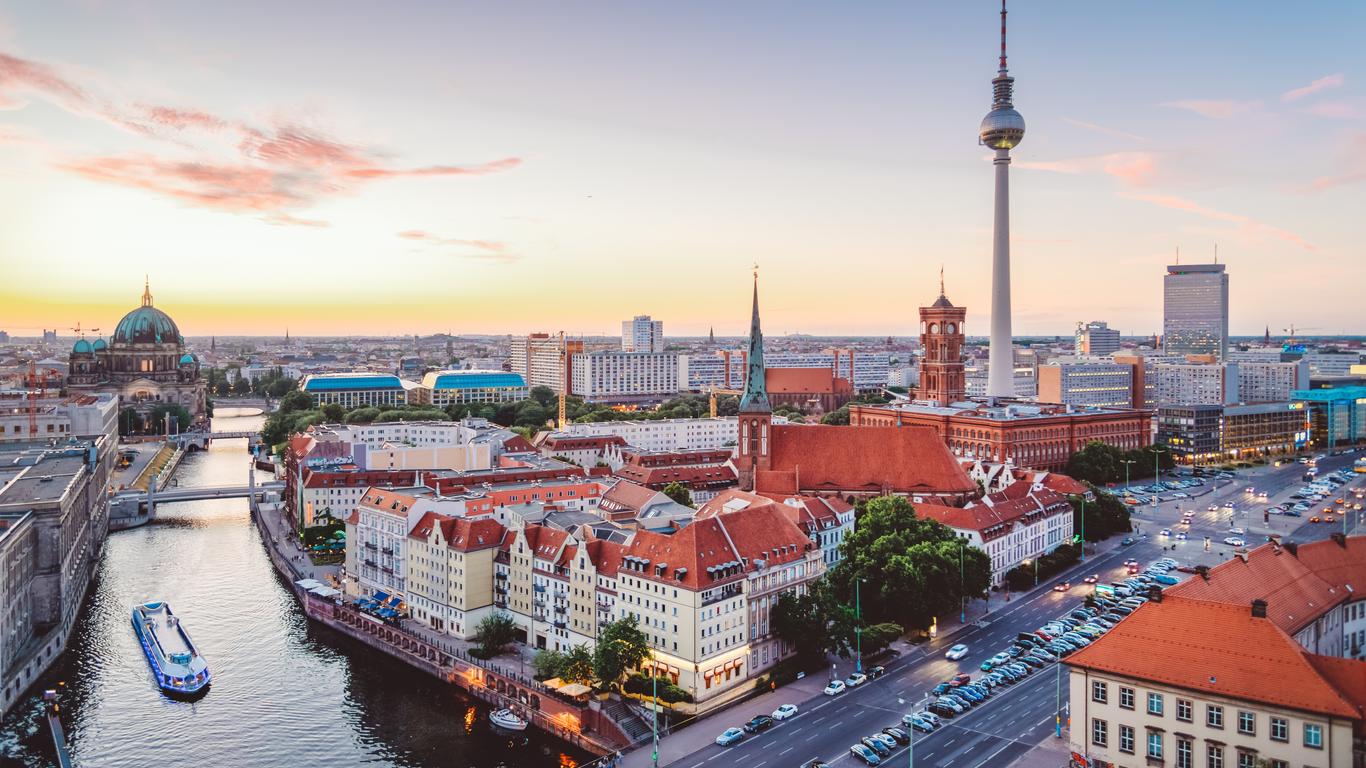Sprawling around the Spree River, the city-state of Berlin serves as the vibrant capital of Germany, with a rich history dating back to the 13th century. It’s transformed into one of Europe’s most dynamic and creative cities, with eclectic neighbourhoods, outstanding museums and unique attractions that serve as a legacy of its tumultuous past.
Things to do in Berlin
From world-class museums to abandoned airports, Berlin State’s attractions are as diverse as they come.
Explore the 1,316-metre-long East Side Gallery. Decorating the longest-remaining section of the Berlin Wall, this outdoor art gallery is located in the alternative Friedrichshain neighbourhood. Some of the works date back to 1990 when they were created to commemorate the fall of the wall, with highlights including Dmitri Vrubel’s “Fraternal Kiss” and Birgit Kinder's “Trabant”.
Get cultured on Museum Island. Designated as a UNESCO World Heritage Site, this island in the Spree River is packed with internationally renowned museums, such as the monumental Altes Museum and the Neues Museum. Marvel at the historically significant monuments of the Pergamon Museum and admire the Bode Museum’s Byzantine art before browsing the 19th-century paintings in the Alte Nationalgalerie.
Mingle with the locals at Tempelhof. Once used as a site for Nazi rallies, the decommissioned Tempelhof Airport has been transformed into a public park where locals come to picnic. Join a guided tour of its old terminal building to learn about its use as a weapons production site during World War II, as well as the “Berlin Airlift” of 1948.
Visit the “Devil’s Mountain” of Teufelsberg. Nestled in the Grunewald Forest west of Berlin, Teufelsberg was built during the Cold War as a United States spy station. Today, its bulbous white globes are adorned with graffiti. Visit on a guided tour to admire its sweeping views across Berlin.
Getting around Berlin
Berlin-Tegel Airport is the main international gateway to Berlin while Schönefeld Airport is a base for low-cost carriers. Trains connect from destinations across Europe to the Berlin Hauptbahnhof while S-Bahn trains and the U-Bahn subway travel throughout the city.





